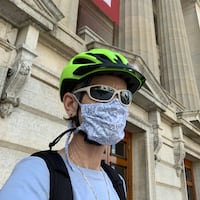National Human Trafficking Resource Center
To report a tip, connect with local anti-trafficking services, or get more information, call 1-888-373-7888 or text HELP or INFO to BeFree (233733).
Parents of six children younger than 7 apparently sold their kids for sex in exchange for money for rent, food or drugs, according to an alarming report by the Ohio Network of Children’s Advocacy Centers.
During the past 12 months, 26 child advocacy centers across state identified 65 minors and seven adults who are potential victims of human trafficking, including the six children younger than 7.
Most of the victims were girls ages 13 to 18 and in roughly half the cases, parents or relatives were allegedly involved in trafficking the children, according to Amy Deverson Roberts, director of the Ohio Network of Children’s Advocates.
The Ohio Department of Job and Family Services awarded a two-year, $523,000 grant to screen minors referred by law enforcement or social service agencies as potential victims of human trafficking. The grant also pays for community outreach, training and recovery services.
Libby Nicholson, founding director of CARE House in Montgomery County, said her agency identified two or three children who were trafficked for sex. Unfortunately, children being pimped out by their parents is not new, she said.
What is new is how officials view juveniles involved in sex labor — seeing them as victims rather than criminals — and the fact that data is now being collected on these incidents.
“This whole movement has sparked a fire within me to do everything I can to make sure these kids are not labeled as criminals and are treated as victims. When I retire and walk out the door, that’s the one thing I want to be able to see – that they are viewed as victims, not criminals,” said Wendy Holt, director of the Clark County CAC.
Her agency identified two females as potential human trafficking victims in the past 12 months: a teen-ager who was trafficked by strangers in multiple states and a developmentally disabled woman who was prostituted by family members, Holt said.
Teresa Wiles, manager of the Child Advocacy Center of Warren County, said her agency found two cases of suspected child sex trafficking, both involved girls who are between ages 7- and 12-years-old. One girl may have been lured into human trafficking by predators using the Internet while the other was prostituted by relatives in exchange for money for living expenses, Wiles said.
“My first reaction was sadness, to be honest, not only for the victim but also for the grotesque way that there is such an easy way to exploit children. It kind of added to our menu of an already unpleasant list of the ways that kids get hurt. To think any child would be sold or exchanged for services is heart breaking,” said Wiles, who has worked in children’s advocacy settings for 28 years. “Once again, like anything else, it takes people who are aware, trained and working together to have successful outcomes for these kids.”
Both cases are under investigation and may be prosecuted. The girls are receiving counseling services and overall they are doing well, Wiles said.
Human trafficking is the illegal trade of people for commercial sex or forced labor. Authorities estimate that 1,078 Ohio children are trafficked every year and another 3,016 are at risk of being exploited. The most common age for children to become victims of this is 13.
“These exploiters are making big bucks. When you’re selling cocaine, it’s one time. When you’re selling people, it can sell over and over again,” Holt said.
The Ohio Human Trafficking Task Force reported that Ohio is vulnerable to this modern day slavery because of its size and its extensive highway transportation network.
Gov. John Kasich has made combatting human trafficking a top priority for his administration. The governor signed two bills into law that call for increased penalties for traffickers and for “johns” soliciting sex from boys or girls under age 16; launched a public awareness campaign; and marshalled state agencies to pin up posters about trafficking in youth lock ups, libraries, health clinics, highway rest stops and elsewhere.
Elizabeth Ranade Janis, Anti-Trafficking Coordinator for the Ohio Department of Public Safety, said the CACs across the state have been building a social service network to help identify and treat children who have been trafficked.
Ranade Janis said she was surprised that very young kids have been sexually exploited for commercial gain.
“It’s still so shocking when you see these little kids,” she said.
She also noted that she expects more children, including more boys, will be identified as human trafficking victims in the near future. “Absolutely, I believe it is just scratching the surface,” she said.
About the Author
